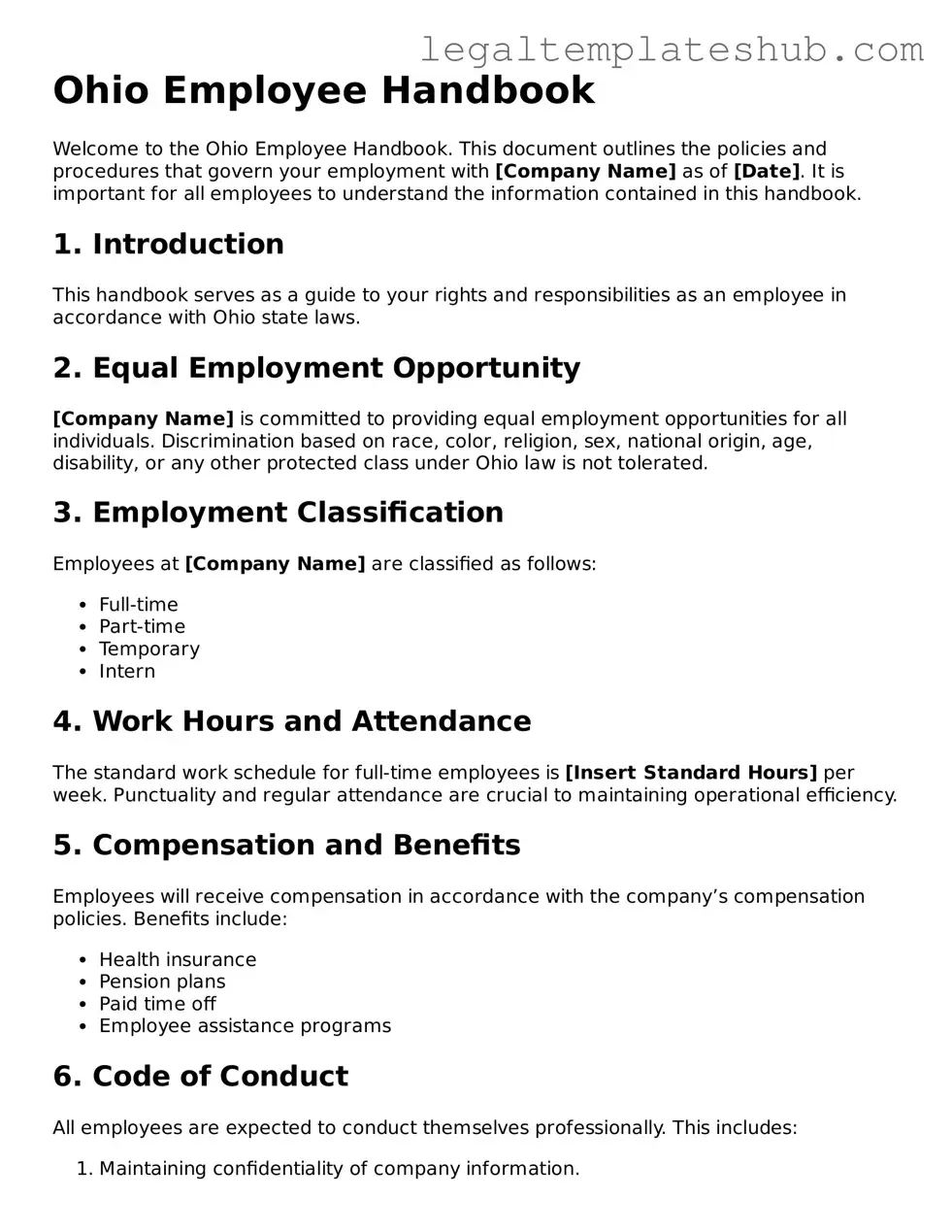Printable Employee Handbook Document for Ohio
The Ohio Employee Handbook form serves as a vital document that outlines the policies, procedures, and expectations within a workplace. It provides employees with essential information about their rights, responsibilities, and the company culture. Understanding this form is crucial for both employers and employees to ensure a harmonious and compliant work environment.
Ready to get started? Fill out the form by clicking the button below!
Access Editor
